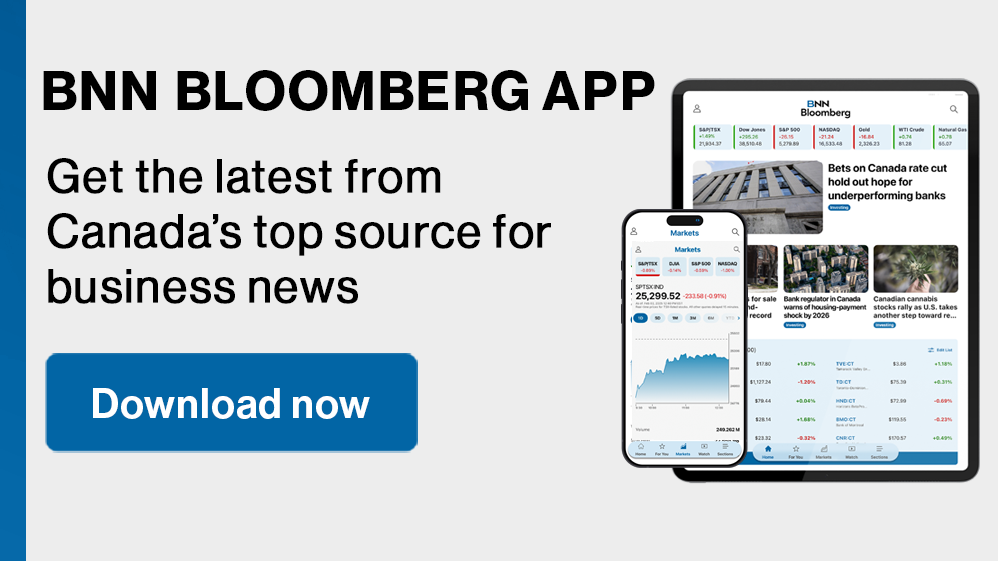(Bloomberg) -- The Canadian dollar slid to its lowest level since March 2020 as Prime Minister Justin Trudeau’s government slips into crisis after the shocking resignation of his finance minister.
The currency extended its recent losses to slide another 0.5% on Tuesday past 1.43 per US dollar, the weakest level since the Covid-19 pandemic first shuttered cities. The loonie has been declining as the US’s northern neighbor’s economy lags and officials struggle to come up with a plan to respond to President-elect Donald Trump’s tariff threats.
The latest political turmoil “is symptomatic of the greater troubles facing the currency with the economy underperforming the US — and now facing the threat of tariffs,” said Skylar Montgomery Koning, a foreign-exchange strategist at Barclays. “We see continued pressure on the loonie.”
On Monday, Chrystia Freeland, a former journalist who’s been finance minister since 2020, stepped down from her post with a letter that laid out her opposition to the prime minister’s push for short-term spending on voter-pleasing measures like tax breaks that expand the budget deficit. After Trump’s victory in the US, Freeland was picked to lead a cabinet group to develop a strategy to respond to US policies.
Trump has threatened tariffs of 25% on Canada, which Deutsche Bank strategist Michael Puempel sees as more likely to be enacted following the recent political angst.
“Simply put, unless there is more stability in Canadian political leadership, we believe Trump is likely to maintain his maximalist approach to trade with one of the US’s largest trading partners,” he wrote in a note to clients on Tuesday. He said his base case is that Canada has an early election in the first quarter of 2025 and ends up with tighter fiscal policy.
For the loonie, that’s only adding to pressures as the Bank of Canada lowers borrowing costs — leading markets to anticipate a widening interest-rate gap with the US. Earlier on Tuesday, inflation fell below the central bank’s target for the second time in three months, offering vindication for policymakers’ aggressive cuts.
“The Canadian economy is skating on thin ice at this point and it’s getting worse with the political turmoil there,” Jim Caron, chief investment officer of cross-asset solutions at Morgan Stanley Investment Management, said in an interview. The political situation is weighing on the currency on top of the Canada-US rate gap, he added.
Implied volatility on the Canadian dollar spiked Tuesday to the highest in more than a year on mounting political risks.
With “holiday liquidity” driving things, the currency can even weaken to 1.4668 per US dollar in the coming weeks, according to Brad Bechtel, global head of FX at Jefferies. That level was last seen on March 19, 2020.
The currency has fallen more than 7% against the US dollar this year so far, on path to have the worst year since 2018. Hedge funds boosted their bets against the loonie in the week ending Dec. 10, according to the latest Commodity Futures Trading Commission data.
The Canadian dollar “is suffering devaluation by a thousand cuts,” wrote Kit Juckes, head of currency strategy at Societe Generale, in a Tuesday note. “The Bank of Canada has taken away rate support, tariff uncertainty weighs and the government is struggling to stay unified.”
--With assistance from Carter Johnson and George Lei.
(Updates prices throughout, adds comments and details.)
©2024 Bloomberg L.P.

